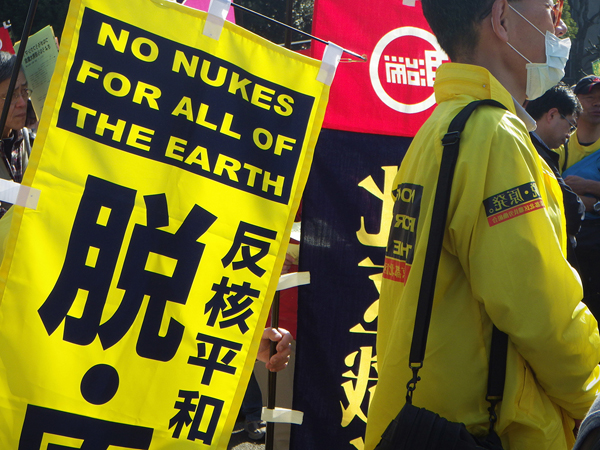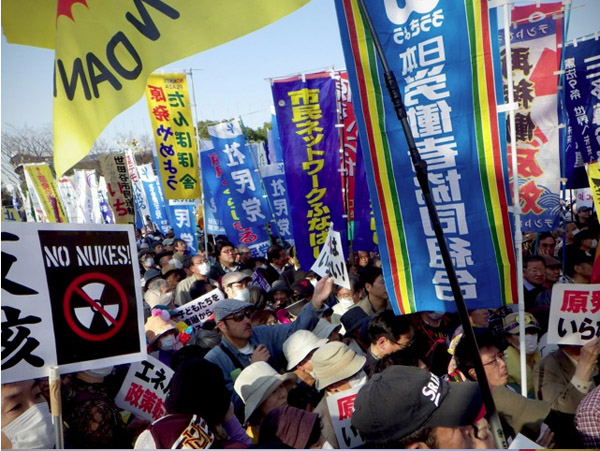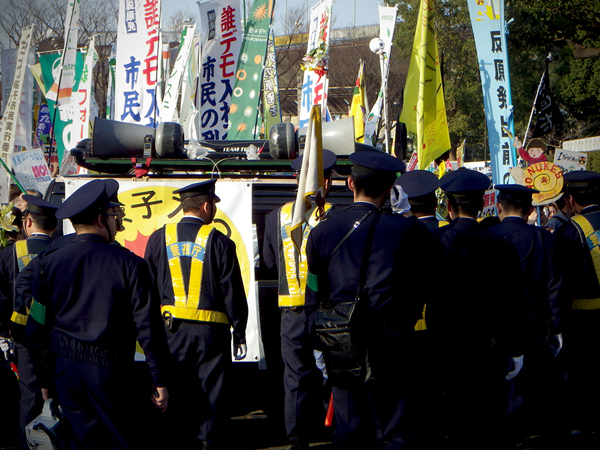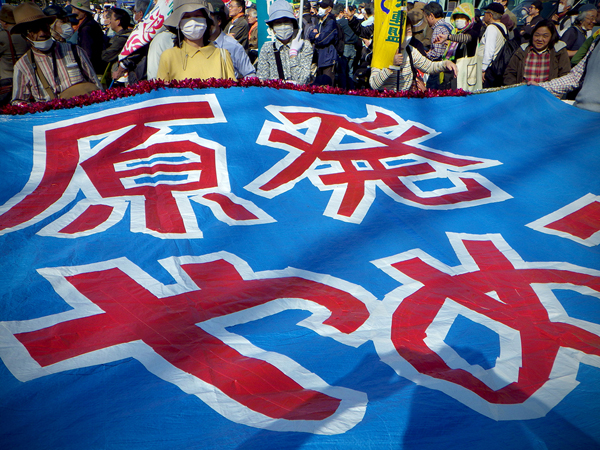Thousands of protesters gathered at Meiji Park in Tokyo on Sunday to mark the second anniversary of the Fukushima nuclear disaster. Photographer Stack Jones was there and this is what he saw:
A sea of colorful banners swayed in the light wind, displaying a variety of slogans, including: “No Nukes For All Of The Earth” and “Unevolved Apes Want Nukes”.
Event organizers, bitterly opposed to the continued use of nuclear power globally, ripped into Abe’s Liberal Democratic Party, condemning it for having a cozy relationship with Obama’s pro-nuclear administration. Speakers voiced their objection to the continued construction of nuclear reactors being built on known fault zones; singled out were reactors currently in the construction phase at Tsuruga, Ohma and Shimane.
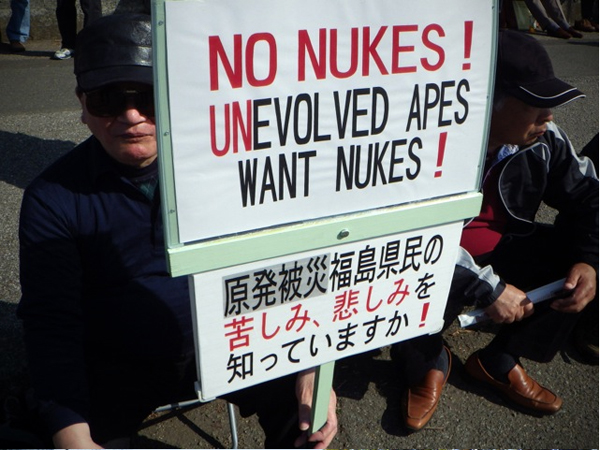
There was a diverse crowd of supporters including a strong showing of elderly citizens and associations that arrived from all over the country to show their support for the cause. Photo: Stack Jones
Presenters refused to accept that their government, and those that benefit from the nuclear industries, have the nation’s best interest at heart. They called for the immediate abolition of nuclear power, not merely phasing it out by the 2030s as has been suggested.
At 4pm the participants took to the streets. Police were clearly overwhelmed by the sheer volume of demonstrators and attempted to control the march by breaking it up into smaller groups of several hundred. At one point I saw what seemed like a fight break out between police and participants who were apparently opposed to the police strategy. There was reportedly one arrest, but nobody was injured.
One group of demonstrators marched straight to the Diet building in Chiyoda Ward and presented petitions that demanded the immediate elimination of nuclear power. Former Prime Minister Naoto Kan was one of the receivers of those appeals.
Another large group marched to Harajuku carrying signs in support of the 150,000 Fukushima residents who remain refugees to this day. Miyuki Suzuki, whose grandmother lives in Iwaki, Fukushima Prefecture, and who had to be evacuate from her home, was concerned about the future of Japan’s children. “Children in Fukushima have already being discovered to have cancer directly related to the disaster,” she said. “What does the future hold for them?”
Others protesters were infuriated over the lack of government action, the slow clean up of radiation infested communities and the inability to be heard.
Many voiced their contempt for TEPCO’s continued dumping of contaminated water into the Pacific Ocean, while others showed concern for all of the spent nuclear fuel that continues to accumulate with no plan as to how to store it.
One thing that both sides seem to agree on regarding nuclear energy is that it’s a harsh reality. It’s not the cheap energy source as it has been marketed, and it’s clearly not always safe, especially when profits take precedence over safe operation of the facilities that produce the energy. Everybody wants a computer, an iPhone, a warm shower, air conditioning in the summer, heating in the winter, a hot meal and a cold drink whenever they desire.
As of January 2013 there are 437 nuclear reactors in 31 countries. There are 104 nuclear reactors operating commercially in the US alone; another 34 are managed by universities. These numbers do not reflect reactors operated by the U.S. military.
The US Department of Energy projects that US electricity demands will grow by 28% by 2040. This means the U.S. will need hundreds of new power plants to provide electricity for that growing demand. Maintaining nuclear energy’s current 20% share would require building one reactor every year until 2040. (Source: Nuclear Energy Institute.)
Over sixty reactors are currently being constructed in thirteen countries including the US, China, India, Pakistan, Taiwan, South Korea and Russia. It doesn’t seem that there will be a nuclear free world any time soon.
All photographs by Stack Jones. To see more of his photography, shot during and after the 2011 triple disaster, and for an insight into his personal experience while on the road with his camera, see this link: stackjones.com/photography

